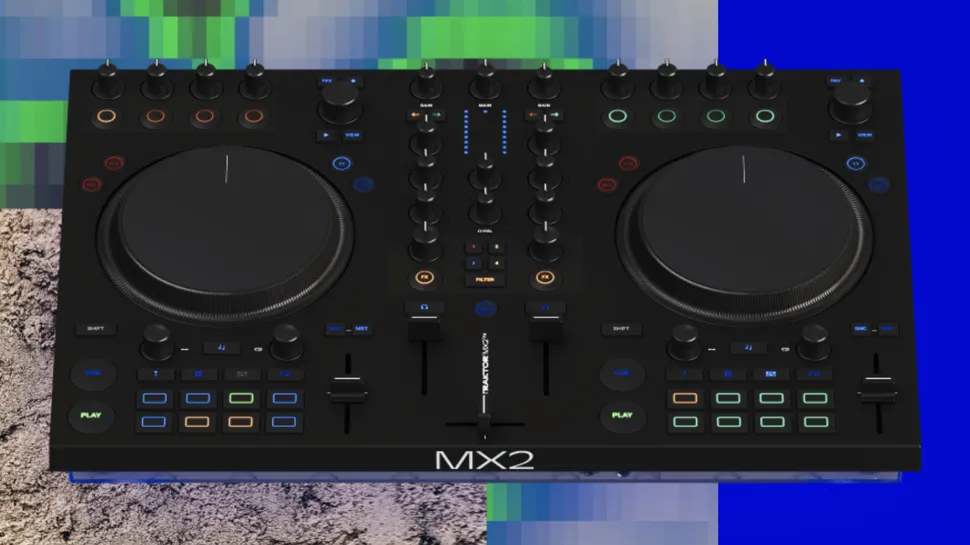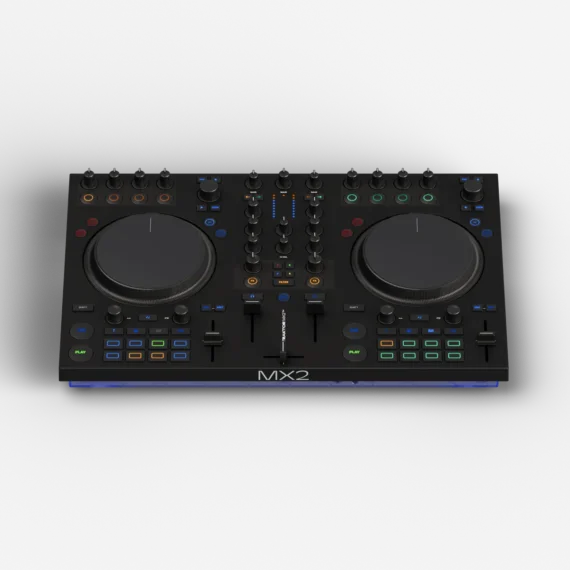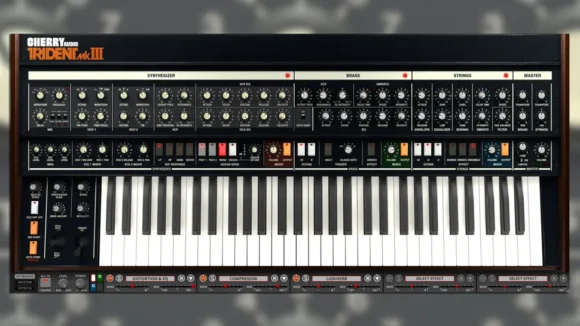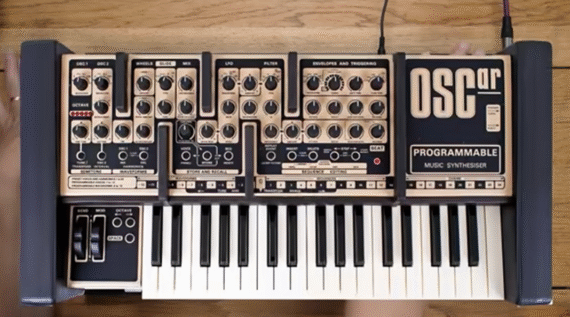Native Instruments Launches Traktor MX2

It’s almost six years since Native Instruments last launched an official mixing controller for its DJ software Traktor.
The past 18 months have seen a renewed DJ focus from NI though, with the launch of updated versions of the company’s X1 and Z1 controller devices followed by version 4 of Traktor Pro late last year.
Now Native Instruments has announced the launch of Traktor MX2, a next-generation 2-channel DJ controller built for DJs at every level. MX2 combines a streamlined layout with powerful performance tools and a high-quality, built-in audio interface. MX2 puts everything the user needs at their fingertips, including the full version of Traktor Pro 4 software and a two-month Beatport Streaming trial for new customers.
The MX2 is undeniably visually striking, thanks to its assorted light-up pads and colour-coded under-lighting. The colour of the pads themselves is fully customisable, allowing users to shape the look and functionality of the MX2. That under-lighting can be used to indicate when a track is about to finish or when a loop is active.

The layout of the MX2 is quite similar to that of NI’s previous S2, though with some updated functionality. Each deck has a touch sensitive jogwheel with both jog and turntable modes, allowing them to be used for scanning through tracks, nudging timing or scratching.
Below each jogwheel is a bank of eight performance pads. These can function as hot cues, but also be used to step sequence using Traktor’s Pattern Player. The pads can also be used in Flux Loop mode in order to perform quick loops without losing the timing of the playing track.
The pads are also designed to control Traktor’s stem separation functionality, which was added with Traktor Pro 4. This allows tracks to be broken into drum, vocal, bass and instrument stems, which can then be muted and mixed individually.
The MX2 also offers hands-on control over Traktor’s performance effects. Its central Mixer FX section lets users introduce one-knob macro style controls. The pair of Deck FX units, meanwhile, allow users to combine effect modules from Traktor’s range of 40 processor types.

A creative performance toolbox. Traktor MX2 gives DJs everything they need to express themselves and stand out with sound, rhythm, and effects:
- Mixer FX made simple – Instantly create drops, buildups, and transitions with a single dial. Nine one-knob effects, from filters to reverbs and delays, let you build tension and release with ease.
- Deck FX for deeper shaping – Take tracks into new territory with more than 40 studio-grade effects. Layer, stretch, or transform sounds in real time across two assignable FX units.
- 16 RGB performance pads – Four versatile pad modes unlock new creative possibilities:
- Hotcues – Jump to peak moments, skip breakdowns, or trigger drops with a single press.
- Flux Loops – Add energy with stuttered loops that stay in sync and return seamlessly to the flow.
- Pattern Player – Turn the pads into a step sequencer to program hi-hats, snares, or percussion on the fly.
- Stems – Split tracks into vocals, drums, bass, and instruments to remix live and create unexpected blends.
Light up your mixes. Even in the darkest booth, Traktor MX2 keeps you connected to your performance.
- The illuminated bottom shell warns you when a track is running out or looping, so you’re always one step ahead.
- Customizable pad colors let you personalize your setup to match your flow and stand out on stage.
- Two touch-sensitive jog wheels provide precision control for nudging, scratching, and scrolling; with both Turntable and Jog modes.
Sound great anywhere. Wherever you play, from house parties to underground clubs, MX2 delivers high-fidelity 24-bit/96kHz audio through its built-in interface. Powered by iZotope’s Ozone Maximizer in Traktor Pro 4, your mixes stay punchy, polished, and distortion-free.
According to Native Instruments: “MX2 combines a streamlined layout with powerful performance tools and a high-quality built-in audio interface. Whether you’re just starting out or looking for a portable setup that’s club-ready, MX2 puts everything you need at your fingertips, including the full version of Traktor Pro 4 software.”
Beatport Streaming included. Traktor MX2 comes free with a two-month Beatport Streaming subscription for new customers, so you can start DJing in seconds without building a downloaded library. Choose from millions of club-ready tracks, all ready to mix, with curated playlists and charts to spark inspiration.

Native Instruments’s Traktor MX2 is available worldwide, and retails for € 399 (MSRP) / US $449 (MSRP) / £ 349 (MSRP). Get all the details at Native Instruments site.



